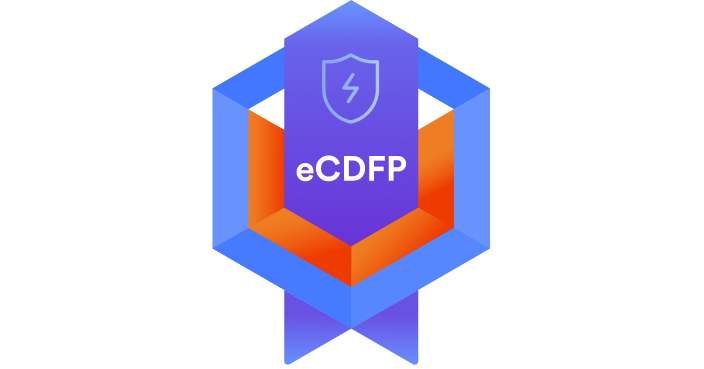Passed the eCDFP
My journey to passing the eCDFP exam.
Training
The training course for the eCDFP (Certified Digital Forensics Professional) certification is a self-paced program designed to be completed in around 30 hours. It is structured to provide a deep technical understanding of digital forensics, with a focus on practical skills. The course emphasizes hands-on analysis of digital evidence from both network and endpoint devices, teaching participants how to gather, retrieve, and interpret data.
Key Subjects Covered:
- Data Acquisition
- File & Disk Analysis
- Windows Forensics
- Network Forensics
- Log and Timeline Analysis
The training also introduces a wide array of forensic tools, including FTK Imager, RegRipper, ShellBags Explorer, Registry Explorer, Autopsy, HxD, WinHex, tcpdump, and Wireshark.
Theory: A Detailed but Slide-Heavy Approach
The theory section of the course was captivating but a bit heavy on slides, with over 600 slides per subject in some cases. While informative, the sheer volume of slides made it feel more like a traditional lecture than a dynamic learning experience. However, I appreciated the focus on manual analysis, encouraging the use of your own knowledge and reasoning rather than relying on automated forensic tools like Magnet Axiom, which tend to oversimplify the process.
I ended up exceeding the planned 30-hour course duration due to the time spent taking thorough notes and engaging deeply in the labs.
Labs: A Mixed Experience
The labs were a crucial part of the course, and while some were excellently structured and closely tied to the theory, others were less intuitive. The well-explained labs offered practical applications of the material and felt aligned with the objectives of the course. Unfortunately, a few labs lacked clarity and left me uncertain about whether I was achieving the intended learning outcomes.
Exam: A Test of Theory and Practical Skills
To prepare for the exam, I relied heavily on the notes I had taken throughout the course and made sure to complete all the labs. The exam itself has a 24-hour time limit, comprising 30 multiple-choice questions. These questions are split between theory (15 questions) and practical analysis (15 questions). The practical questions involve analyzing the provided evidence using two virtual machines accessible via a web browser. These VMs come pre-installed with some of the tools discussed in the course, though not all, which posed its own challenges.
My Experience:
- Theoretical Questions: While all theoretical questions were technically covered in the course material, I found a few to be ambiguous. Some answers seemed open to interpretation, which made it tricky to pinpoint the most accurate response.
- Practical Questions: These involved analyzing forensic images and traffic captures, and the difficulty was mostly balanced, building on the course content. However, some questions required techniques or knowledge not explicitly covered in the training. This created a bit of a learning curve during the exam itself, which I didn’t expect but embraced as part of the experience.
Some of the tools I had learned in the training weren’t available in the exam environment, requiring me to adapt to alternative tools on the fly. This added to the complexity.
Ultimately, my first attempt just felt short, with a score of 73% (just shy of the required 76%).
Retake: A Refined Approach
For my second attempt, I revisited the labs, focusing specifically on areas where I struggled during the first exam. I also expanded my study materials, taking advantage of additional content on the INE platform that was related to the exam. This extra effort paid off.
My second exam attempt went much smoother, and I was able to complete it in about 11 hours, earning a passing score of 90%.
Rewarding
The eCDFP exam is challenging and, in some respects, a bit outdated, especially regarding the tools available during the exam. However, it provides a comprehensive and in-depth introduction to digital forensic investigation. While some aspects of the course and exam could benefit from modernization, I appreciated the emphasis on hands-on, practical skills. The practical section of the exam, in particular, was a highlight, pushing me to apply what I had learned under real-world conditions.
Ultimately, the eCDFP certification is a rigorous but rewarding credential for anyone looking to deepen their knowledge and skills in digital forensics.
